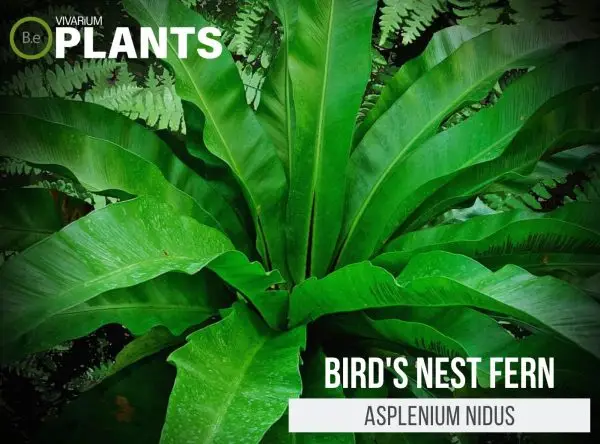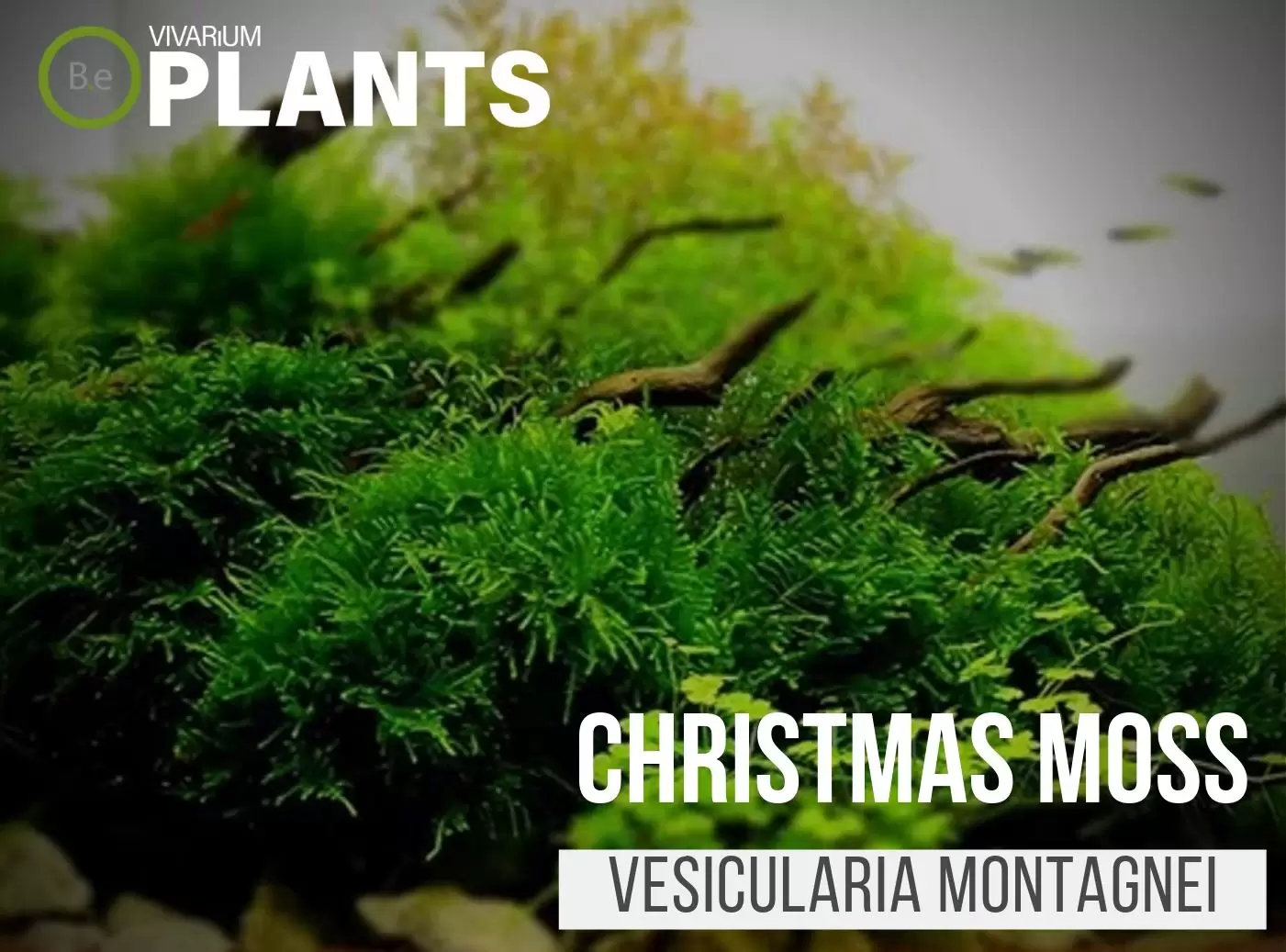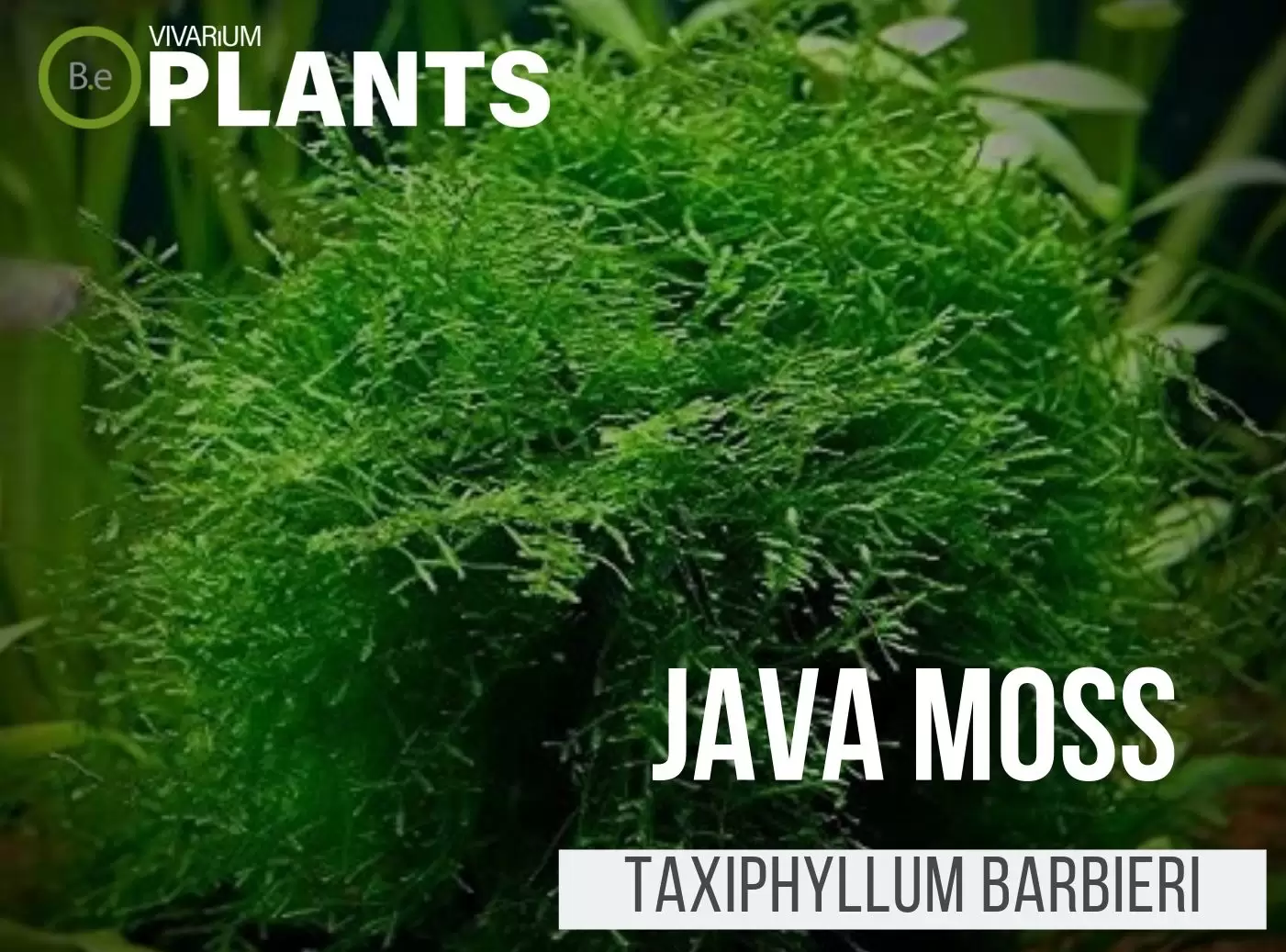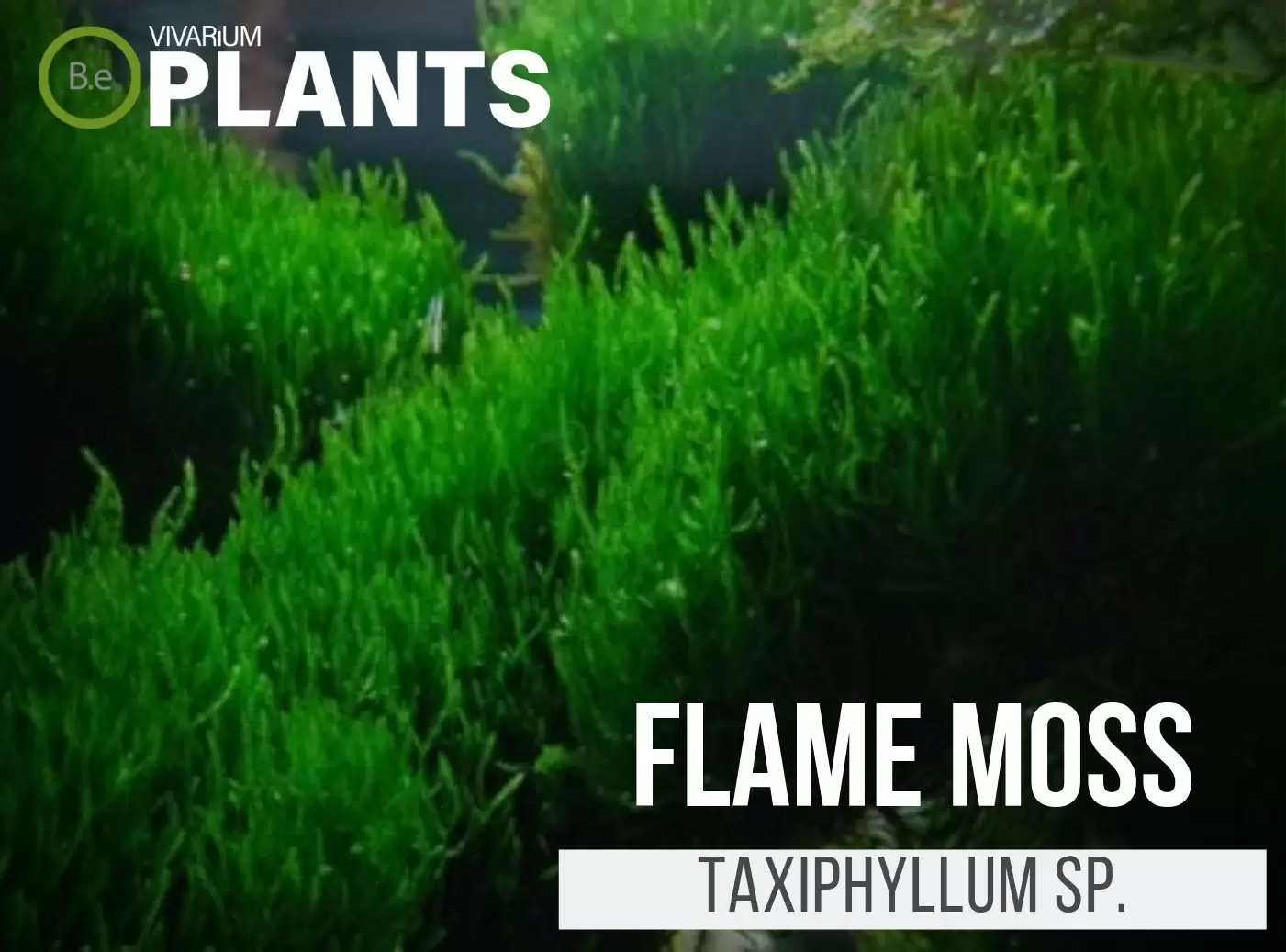Asplenium nidus, also known as Bird’s Nest Fern, is an interesting and unique-looking houseplant that can also be grown in a terrarium.
As one of the few true epiphyte ferns to prominent feature in hobbyist enclosures, the wavy and soft ruffled fronds are perfect for adding texture and a tropical feel to your tank.
Although this terrarium fern is relatively easy to manage, it can be quite tricky in a humid, temperate vivarium.
| Quick Stats: | |
|---|---|
| Scientific Name | Asplenium nidus |
| Common Name | Bird’s Nest Fern, Crow’s Foot Fern |
| Family Name | Aspleniaceae |
| Habitat | Epiphyte, Tropical |
| Temperature | 65°F to 80°F |
| Height | 45 cm (18 in) |
| pH | 5.5–6.0 |
| Lighting | Bright |
What Is Bird’s Nest Fern?
Asplenium nidus is a species of fern that grows in a compact and curved shape.
It has knobby plantlets that form on older, mature fronds and can eventually spread across the plant.
Its leaves are broad and thin, with fronds reaching around 18 inches in length.
Its namesake comes from the bird’s nest-like shape of the ruffled leaves, sometimes with brown edges.
The Bird’s Nest Fern is a unique tropical plant native to New Guinea, Malaysia, India, and other Southeast Asian countries.


Bird’s Nest Fern Facts
Staghorn ferns come in a variety of colors ranging from green to bronze.
They are a relatively low-maintenance plant and one of the most forgiving ferns a hobbyist can own.
As an epiphyte species, they grow off the side of trees, living off the moisture and nutrients provided by their surroundings.
Description
The Bird’s Nest Fern gets its name from the fronds that form a bowl-like shape when the plant is mature, resembling a ‘bird’s nest’.
The fronds of this plant are broad and thin, and unlike most other ferns, have wavy, ruffled edges.
The texture of the leaves is soft and can range from dark green to light green.
The veins of the fronds can be prominent in color, extending toward their edges.
Habitat
Asplenium nidus is native to the warm, humid, and tropical climates of southeast Asia.
They will flourish in cooler temperatures and high humidity, more suitable to the warm temperate and tropical vivariums that hobbyists keep.
They prefer filtered or indirect light, with some protection from direct sunlight, as this could scorch the leaves.
pH Preference
Although Asplenium nidus is rather adaptable, it prefers to live in slightly acidic environments.
A pH range, optimally, of 5.5 to 6.0 will ensure this plant is happy and healthy.
A pH closer to 6.0 is ideal for this plant, as it lives natively in slightly more acidic environments.
Vivarium Type
This type of moss will do great in a variety of vivarium types.
When deciding if rather or not to use Bird’s Nest Fern in a particular type of enclosure, Be sure to go with setups that have dry terrain areas.
Here are recommended vivariums bird’s nest fern will do well in:
- Paludariums – Half aquatic/ half terrain-based enclosure.
- Ripariums – Mostly aquatic-based enclosures with some terrain features present.
- Terrariums – Fully terrain-based enclosures with little to no aquatic features.
Vivarium Placement
Asplenium nidus makes an excellent background plant, as it can grow up to 18 inches tall.
It can also be used to create a more realistic diorama.
It’s generally easier to propagate larger, single specimens in the beginning, as they will fill the area more quickly and efficiently.
These plants can be mounted directly onto the glass but will thrive better when mounted onto driftwood or cork.
They can also be grown in a damp, but well-draining, medium.
Substrate
Given its epiphytic nature, Asplenium nidus does not need a soil substrate to survive.
For a terrarium, however, it will need something to mount onto and to take root in.
A sphagnum moss strain or a variety of orchid mixes will be ideal for this plant.
Such mixes are lightweight and contain lots of organic material for the plant to feed off of.
A terrarium soil mix is also a suitable medium, as long as it contains plenty of organic material and is well-aerated.
Lighting
Asplenium nidus prefers a quite bit of light, but too much can burn their leaves.
In the wild, they would occupy shady areas, like underneath tree canopies and up in the branches.
A bright terrarium light that is diffused with a curtain or other type of filter will do best.
The tank should not be in direct sunlight and preferably away from any type of artificial light that produces UV.
Aim for cooler color lights that mimic a cloudy day or shaded forest, Like LEDs!
Buy Bird’s Nest Fern
When shopping for Bird’s Nest Fern, expect a few key indicators you are buying the best quality plant.
The fern should be slug free along with any other type of pest. The source of the fern will usually be sold in a small potted cluster, ready for you to re-pot.
The batch should arrive fairly damp and in fairly good shape.
Click the image below to find out more about the current price and other relative info:
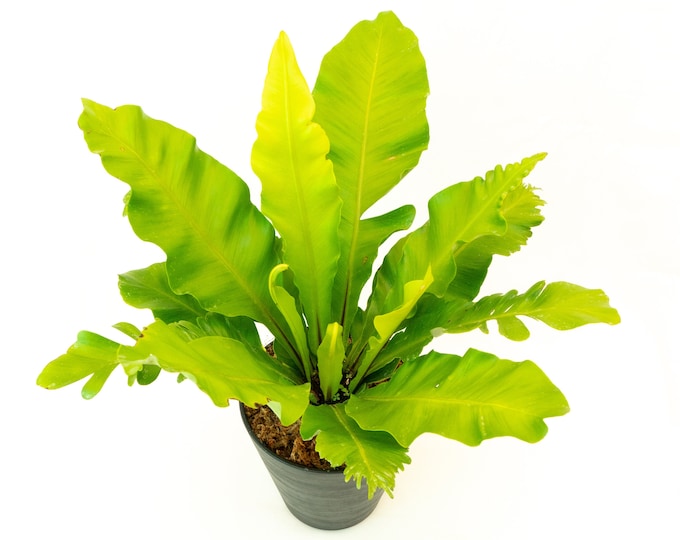

Bird’s Nest Fern Care and Propagation
Care for Asplenium nidus is relatively easy and straightforward.
This plant likes to stay quite moist but will be very happy in a humid environment.
It will benefit from regular misting and misting at the base of the plant if grown on a substrate.
It also does not require much in the way of fertilizing and will thrive on basic organic materials from its environment.
Propagation is best done through the division of the root ball which can be done using a sterile razor blade.
How to grow
Asplenium nidus can be grown in a vivarium by mounting directly into a clean and dry substrate or mounting onto driftwood or cork.
It can also be grown in soil, as long as it contains plenty of organic material and is well-aerated.
Mounting on cork may be preferable, as it will keep the rhizoids (tiny root-like structures) of the Bird’s Nest Fern more securely attached to the substrate.
Plantlets can also be grown directly onto the substrate and will form into larger plants when growing healthily.
Watering
Bird’s nest fern should be watered quite often. As an epiphyte, it lives naturally in humid environments and will require a misting or two a day to keep the roots moist and healthy.
As with all types of ferns, do not let it dry out, or root rot is likely to occur.
If it is being grown in a potting soil substrate, water it when the top layer is dry, and make sure to add water to the areas where the root ball is to keep it hydrated.
Plants Similar To Bird’s Nest Fern
Adding diversity to an enclosure is key to an aesthetically pleasing enclosure.
Try mixing up the look of your vivarium with different flora that can easily co-exist in the same types of environment.
Furthermore, if for some reason you find this Fern hard to acquire or would like to consider something similar to this plant…
Here are some other plants you might find may do well with or in place of Asplenium nidus:
Conclusion
Bird’s nest fern is an ideal addition to any temperate or tropical vivarium.
Its broad, thin leaves are full of wavy and ruffled edges, and its knobby plantlets spread across the plant create a dense covering that adds an interesting depth to your enclosure.
As an epiphyte, this plant does not require much water, but make sure not to let it dry out too much as this will cause root rot.
With patience and the right set-up, this terrarium plant is a unique and interesting addition to any vivarium.
Frequently Asked Questions
Caring for a Bird’s Nest Fern (Asplenium nidus) requires a moist, humid environment, plenty of indirect sunlight, and regular misting. Soak the soil twice a week and keep the temperature between 65–80°F. Keep the potting mix lightly moist and use a liquid fertilizer twice a month during the growing season. Trim the fronds if they become too long, and be sure to avoid draughts and cold temperatures.
No, Bird‘s Nest Fern (Asplenium nidus) is not toxic and is generally considered safe for humans and animals.
The Bird‘s Nest Fern (Asplenium nidus) needs bright, indirect light indoors in order to thrive. It should be set near a window away from direct sunlight. It appreciates high humidity but can tolerate average humidity levels as well.
The Bird‘s Nest Fern (Asplenium nidus) is a highly tolerant and low maintenance indoor plant. It can survive in a wide range of humidity levels, temperatures, and natural light conditions. It can be kept outdoors in a brightly shaded area with partial sunlight.
Yes, you should cut the brown tips off your Bird’s Nest Fern (Asplenium nidus). This will help your fern look its best and prevent the brown tips from growing larger and traveling further down the plant. Make sure you prune the tips away by using sharp gardening shears or scissors so you don‘t damage the healthy green leaves. Once you‘ve cut off the brown tips, you can regularly check for any additional browning, and trim it as necessary.
Yes, Bird‘s Nest Fern (Asplenium nidus) is known to purify the air and improve indoor air quality. The plant is especially effective at removing toxic compounds like formaldehyde, xylene, and toluene, making it a popular choice for indoor growers. It does this in two ways: through absorption and filtration. The plant‘s wide leaves and deep roots absorb airborne toxins and filter them, while its stiff and rubbery surface helps break down VOCs from the air. Furthermore, this fern also increases the humidity of the air around it, helping to reduce the levels of airborne allergens like dust mites, mold, and bacteria.
The best place to put a bird’s nest fern is in a spot where it will get bright, indirect sunlight, as too much sun will burn the leaves. The fern also needs to be kept in consistently moist soil, but not soggy as this could lead to root rot. Finally, keep the fern away from any drafts or sudden temperature changes.
